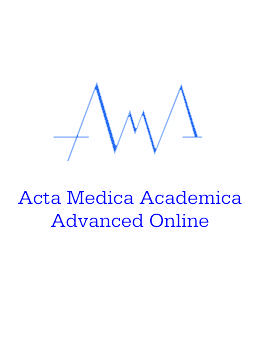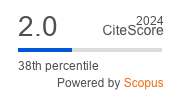Cadaveric Exploration of the Anatomical Position of the Adductor Canal
DOI:
https://doi.org/10.5644/ama2006-124.476Keywords:
Adductor Canal Block, Adductor Hiatus, Mid-Inguinal Point, PatellaAbstract
Objective. This study aimed to precisely identify the location of the adductor canal to assist knee surgeons during procedures.
Materials and Methods. We utilized twenty formalin-fixed cadavers to measure the length of the lower limb from the mid- inguinal point (MIP) to the base of the patella and divided the measured length into three parts: the proximal, middle, and distal. After dissecting the adductor canal, we measured the distance between the MIP and the proximal foramen and the distal fora men (adductor hiatus), the distance between the distal foramen and the base of the patella, and the length of the adductor canal. We also measured the location of the proximal and distal foramina concerning the upper and lower limits of the middle third of the thigh.
Results. The mean lengths of the thigh and adductor canal were 39.59±3.6 cm and 15.24±2.26 cm, respectively. The average distances between the MIP and the proximal and distal foramina and between the distal foramen and the base of the patella were 14.39±1.98 cm, 29.56±2.22 cm, and 10.28±1.87 cm, respectively. In 75% of lower limbs, the proximal foramen was below the upper limit of the mid-third of the thigh, with an average distance of 1.74 cm, whereas in 85% of cases, the distal foramen was below the lower limit of the mid-third of the thigh, with an average distance of 3.3 cm.
Conclusion. This study suggests that the ideal adductor canal block approach is within the middle third of the thigh.
References
Jæger P, Koscielniak-Nielsen ZJ, Schrøder HM, Mathiesen O, Henningsen MH, Lund J, et al. Adductor canal block for postoperative pain treatment after revision knee ar- throplasty: a blinded, randomized, placebo-controlled study. PLoS One. 2014;9(11):e111951. doi: 10.1371/jour- nal.pone.0111951.
Manickam B, Perlas A, Duggan E, Brull R, Chan VW, Ramlogan R. Feasibility and efficacy of ultrasound-guid- ed block of the saphenous nerve in the adductor canal. Reg Anesth Pain Med. 2009;34(6):578-80. doi: 10.1097/ aap.0b013e3181bfbf84.
Van der Wal M, Lang SA, Yip RW. Transsartorial approach for saphenous nerve block. Can J Anaesth. 1993;40(6):542-6. doi: 10.1007/BF03009739.
Lund J, Jenstrup MT, Jaeger P, Sørensen AM, Dahl JB. Continuous adductor-canal-blockade for adjuvant post- operative analgesia after major knee surgery: preliminary results. Acta Anaesthesiol Scand. 2011;55(1):14-9. doi: 10.1111/j.1399-6576.2010.02333.x. Epub 2010 Oct 29.
Tan M, Chen B, Li Q, Wang S, Chen D, Zhao M, et al. Comparison of Analgesic Effects of Continuous Femo- ral Nerve Block, Femoral Triangle Block, and Adduc- tor Block After Total Knee Arthroplasty: A Random- ized Clinical Trial. Clin J Pain. 2024;40(6):373-82. doi: 10.1097/AJP.0000000000001211.
Dixit A, Prakash R, Yadav AS, Dwivedi S. Comparative Study of Adductor Canal Block and Femoral Nerve Block for Postoperative Analgesia After Arthroscopic Ante- rior Cruciate Ligament Tear Repair Surgeries. Cureus. 2022;14(4):e24007. doi: 10.7759/cureus.24007.
Jæger P, Zaric D, Fomsgaard JS, Hilsted KL, Bjerregaard J, Gyrn J, et al. Adductor canal block versus femoral nerve block for analgesia after total knee arthroplasty: a randomized, double-blind study. Reg Anesth Pain Med. 2013;38(6):526-32. doi: 10.1097/AAP.0000000000000015.
Wong WY, Bjørn S, Strid JM, Børglum J, Bendtsen TF. Defining the Location of the Adductor Canal Using Ul- trasound. Reg Anesth Pain Med. 2017;42(2):241-5. doi: 10.1097/AAP.0000000000000539.
Thiayagarajan MK, Kumar SV, Venkatesh S. An Exact Lo- calization of Adductor Canal and Its Clinical Significance: A Cadaveric Study. Anesth Essays Res. 2019;13(2):284-6. doi: 10.4103/aer.AER_35_19.
Anagnostopoulou S, Anagnostis G, Saranteas T, Mavroge- nis AF, Paraskeuopoulos T. Saphenous and Infrapatellar Nerves at the Adductor Canal: Anatomy and Implications in Regional Anesthesia. Orthopedics. 2016;39(2):e259-62. doi: 10.3928/01477447-20160129-03. Epub 2016 Feb 3.
Downloads
Published
License
Copyright (c) 2024 Heena Singh, Noor Us Saba, Raghvendra Singh, Pratibha Shakya, Navneet Kumar

This work is licensed under a Creative Commons Attribution-NonCommercial 4.0 International License.





